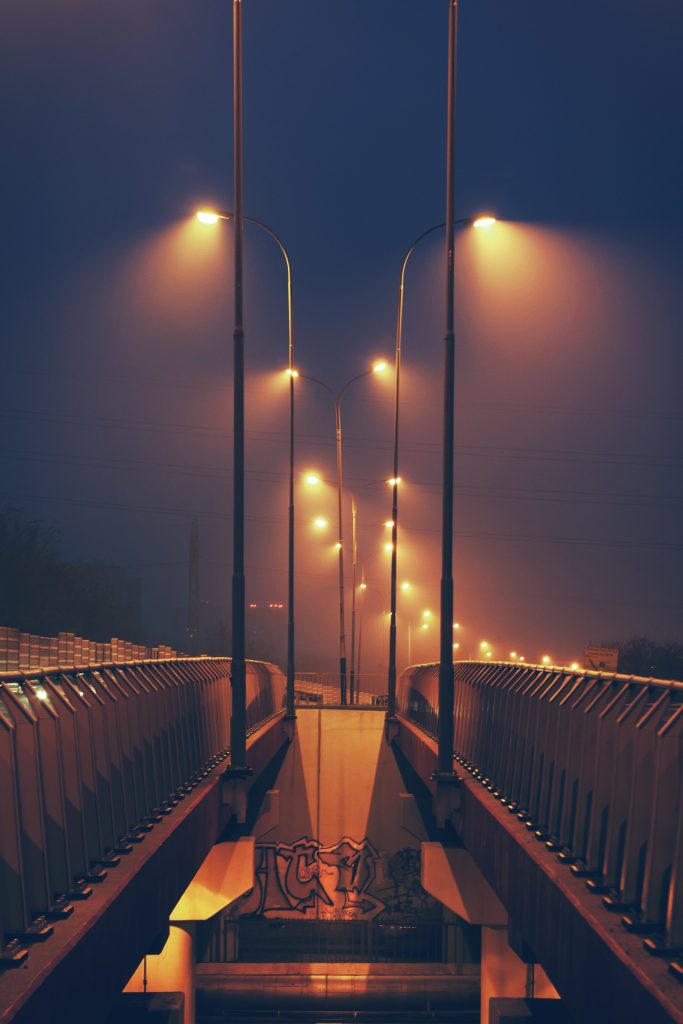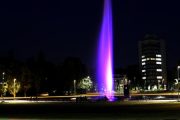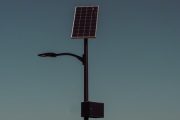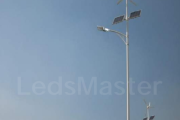10 Points of Street Light Design
- Is the main switch of the street light 3P or 4P?
If it is an outdoor lamp, in order to avoid the danger of leakage, a leakage switch will be installed, and a 4P switch should be used at this time. If leakage is not considered, the main switch can be a 3P switch.
- The advantages and disadvantages of different layouts of street lights
Single-sided layout-suitable for relatively narrow roads, he requires the installation height of the lamps to be equal to or greater than the effective width of the road. The advantage is that it has good inducement and low cost. The disadvantage is that the brightness (illuminance) of the road surface on the side where the lamp is not installed is lower than the side where the lamp is installed.
Staggered arrangement-The installation height of the lamps is required to be no less than 0.7 times the effective width of the road. The disadvantage is that the longitudinal uniformity of brightness is poor, and the inducibility is not as good as that of unilateral arrangement. Symmetrical arrangement—Requires that the installation height of the lamps is not less than half of the effective width of the road.
- Reasonable choice of street lamp installation height, cantilever length and elevation angle
Installation height (h)—The economical installation height of the gas discharge lamp is 10-15m. The glare of lamps with too low installation height will increase, and the glare of too high lamps will decrease, but the lighting utilization rate will decrease.
Cantilever length—should not exceed 1/4 of the installation height. The effect of too long cantilever:
1). Reduce the brightness (illuminance) of the sidewalk and curb on the side where the lights are installed.
2). The mechanical strength requirements of the cantilever become higher, which affects the service life.
3). Affect the beauty, resulting in the inconsistent ratio between the cantilever and the light pole. 4). The cost will increase.
Elevation angle—The elevation angle of the lamp should not exceed 15 degrees.
The installation elevation angle of the lamp is to increase the horizontal illumination range of the lamp on the road surface. Excessive size will increase glare and decrease the brightness of slow lanes and sidewalks.
- Reasonable power compensation options for street lights
The single lamp dispersion compensation method is adopted to increase the power factor of various lamps to above 0.9, which can reduce the capacity of the special transformer for street lamps by more than 51%, and the line loss by about 75%, which has a significant energy saving effect.
- Control method of street lights
In line with the principle of practical energy-saving, following the practice of most cities nowadays, a control method combining light control and clock control is designed according to the different requirements of contrast in different traffic periods. That is, during heavy traffic hours after dark, all street lights are turned on to ensure the safe passage of pedestrians and vehicles. After midnight, as the traffic volume decreases, all street lights on one side are turned off by clock control to ensure normal traffic. Under the premise of achieving the most economical energy saving effect.
- Selection of lighting power distribution method
For landscape lighting and road lighting with a short power supply distance and a small calculation load, single-phase power distribution can be used, and the voltage drop and terminal short-circuit current value should be checked. The power distribution cabinet is of outdoor type, and the bottom side is 0.3 meters above the floor for floor installation.
For long power supply distances and large calculation loads, three-phase power distribution is used, and the three phases A, B, and C in the low-voltage circuit are connected to each group of street lights in turn to avoid three-phase imbalance. The power distribution cabinet is of outdoor type, and the bottom side is 0.3 meters above the floor for floor installation.
The three-phase five-wire circuit used in the low-voltage lighting circuit can effectively reduce the line voltage loss compared with the traditional single-phase circuit.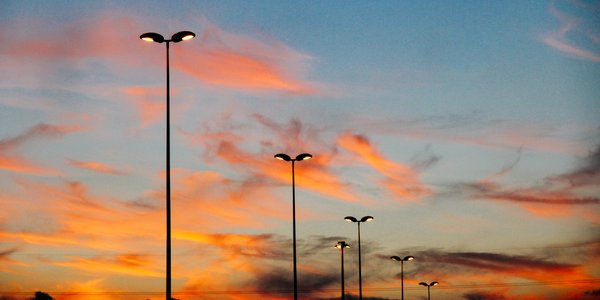
- The size and laying requirements of street lamp cable protection pipe diameter
The total cross-sectional area of the conductor in the protective tube should not exceed 40% of the cross-sectional area in the tube. The inner diameter of the pipe should not be less than 1.5 times the outer diameter of the cable.
When the cable piercing pipe is buried in the sidewalk green belt, the depth is 0.5 meters, and the D50 steel pipe is changed to cross the street, and the covering depth is 0.7 meters. If the above requirements cannot be met, a C20 reinforced concrete layer is added on the top of the pipe.
- Consider lighting factors such as lighting method and light color
Street lighting must emphasize the integrity of the night scene and the integrity of the group lighting environment. The form of LED lamps should be as simple as possible, while being integrated into the environment, the aesthetic value of the lighting design is closely integrated with the practical value. There is also outdoor night lighting design starting from the surrounding scenery, selective lighting, LED street lights showing the characteristics of buildings and landscapes, the form of light expression should conform to the general trend of contemporary art creation, and be synchronized with the development of the times and society. Changes with the adjustment of the city’s master plan.
- The specific method of street lamp TT grounding system
The local TT system without PE wire is used, and a 300mA leakage protector is added to the circuit of the outgoing circuit breaker. All light poles and lamps must be firmly connected to the base steel bar of the light pole as a grounding device. The ground resistance is less than 30Ω. After the light pole foundation is constructed, it must be tested whether the ground resistance meets the requirements. If it does not meet the requirements, the grounding level must be increased. , See: “National Building Design Standard Atlas” grounding device installation 03D501-4.
The size of the transformer is not a problem. The key is the power supply radius. In engineering, the power supply radius of the street light box is usually about 700 (if you want to accurately calculate the voltage drop), so one transformer is enough for 1.5 kilometers, and 4.225 kilometers is recommended. 3 street light boxes change. The capacity depends on the total power of the circuit lights provided by the transformer, plus 50% reserve (some main roads need to be advertised or reserved for cross-road street lights).
(1) There are missing items in your power calculation. The NG250 of the lamp is the power of the high-pressure sodium light source. Don’t forget the power of the ballast, which is generally 10-20% of the light source power. There is the power value of the ballast, just add it directly.
(2) What you are more worried about is the transformer capacity. After all the power (in KW, active power) is added up, if it does not exceed 80 KW, you can directly divide this total by 0.85 (that is, the power factor of the street lamp), and the number obtained is assumed to be S1. Let S1 be divided by the transformer The capacity can meet the requirements at 70-85%. Or divide S1 by 0.8 to see the value and choose a transformer with a standard capacity. Of course, street lights must consider the use of electricity for traffic signals, advertisements, and urban landscapes. The transformer capacity is usually reserved at 70%, but it must be combined with the owner whether to reserve these electricity. If the transformer capacity is greater than 100KVA, low voltage compensation must be considered. The calculation method is as described above, but the power factor of 0.85 is changed to 0.9 or 0.92.
Street lighting design principles
Urban road lighting is an inestimable important infrastructure in urban construction. It creates a good visual environment for various vehicles and pedestrians in the city at night to ensure traffic safety, improve transportation efficiency, facilitate people’s lives, and reduce crime rates And the purpose of beautifying the urban environment. To a certain extent, it also reflects a city’s economic strength, a sign of social progress and modernization.
Urban road lighting design is the preliminary work of engineering construction. It implements road lighting plans and programs based on road grades and lighting standards under safe, energy-saving, applicable, appearance, and economical and reasonable substitutions, and design documents-therefore , Urban road lighting design should follow certain design procedures and methods, and analyze and consider the geometric conditions of the road, environmental conditions, the development status of lighting technology and other factors. Here we mainly introduce the general methods, principles and procedures of urban road lighting design.
1. Design principles
“Safety and reliability, advanced technology, reasonable economy, energy saving and environmental protection, convenient maintenance” are the basic principles of urban road lighting design.
Safety and reliability is to ensure the safety of people’s lives and property, and reflect the fundamental interests of the broadest masses of people. Therefore, the design must consider the convenience of construction and maintenance of lighting facilities and the reliability of safe operation. This is the most basic of urban road lighting design. Claim.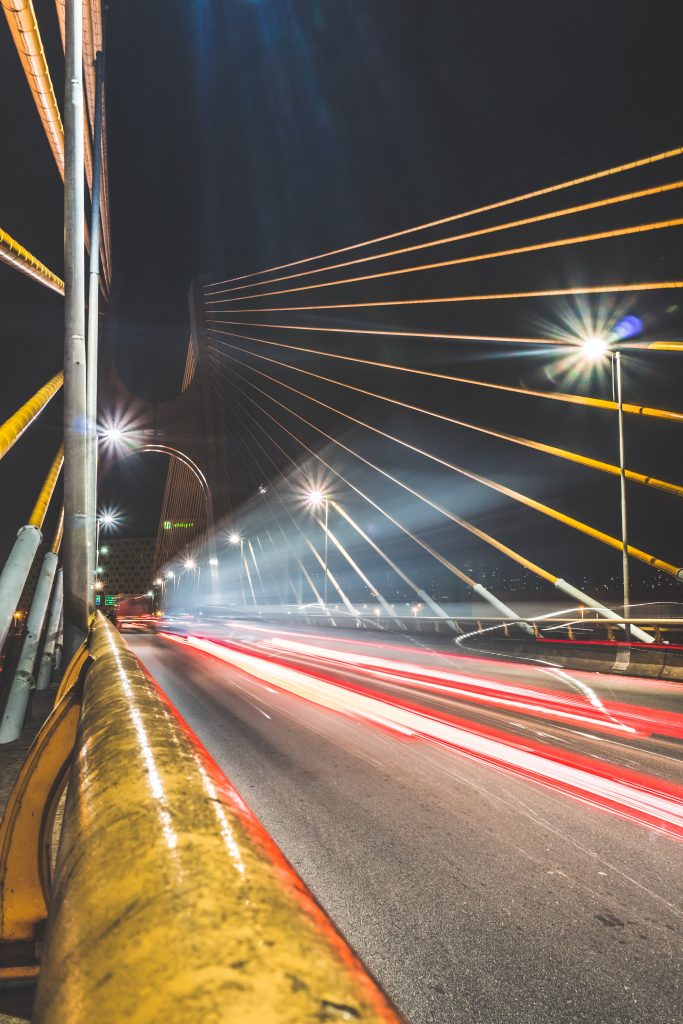
Advanced technology means to vigorously promote new energy-saving and environmentally-friendly technologies and new products, giving priority to certified high-efficiency energy-saving lighting electrical products and energy-saving control technologies, and strive to reduce urban lighting power consumption. Use scientific lighting design methods to avoid the negative effects of light pollution caused by road lighting. In short, the design should be based on the people-oriented principle to build a suitable, harmonious and friendly lighting environment.
The principle of economical and reasonableness has two meanings: on the one hand, it is necessary to obtain better lighting effects with as little project investment as possible; on the other hand, under the premise of meeting night vehicle driving and pedestrian visual conditions, minimize unreasonable lighting The resulting economic and energy waste.
Energy-saving and environmental protection should attract enough attention from urban lighting designers. Artificial lighting has made the night no longer so dark. More lighting or unscientific lighting will not bring more comfortable environment to night pedestrians. Negative problems stand out in front of us. The waste of energy has led to an increase in the atmospheric greenhouse effect and the difficulty of astronomical observation. People cannot sleep peacefully in the “white night” and nocturnal animals have nowhere to hide. As cities become brighter, human health and safety are greatly threatened, and light pollution caused by excessive urban lighting is approaching us step by step.
Maintenance convenience is related to the work efficiency of maintenance workers’ daily operation and maintenance management. Products with complex structures and difficult to install and maintain are unscientific and unqualified products, which affect the economic benefits and work efficiency of the daily operation and maintenance management department.
Urban road lighting also has the function of perfecting urban functions and beautifying the urban environment. Therefore, it is necessary to consider the beauty of road lighting facilities, and not to blindly pursue the beauty of lamps and lanterns to affect the lighting effect or waste excessive electric energy and engineering investment. We must adhere to the people-oriented principle, establish a comprehensive, coordinated and sustainable scientific development concept, and design in strict accordance with urban road lighting design standards and related specifications, strive to build a green, healthy, and humane urban lighting environment, and effectively improve the quality and comprehensive benefits of urban road lighting design .
2. Design steps and depth
- Preliminary design steps and depth
Urban road lighting engineering design is usually divided into two stages: preliminary design and construction design. In the preliminary design stage, a comprehensive technical and economic analysis should be made for multiple design schemes of the project. According to the specific requirements of the project, a technically advanced, reliable, economical and reasonable scheme shall be selected, and preliminary design documents shall be prepared. The preliminary design documents shall meet the following requirements:
(1) Collect road design plans, and preliminarily determine road grade standards and lighting standards;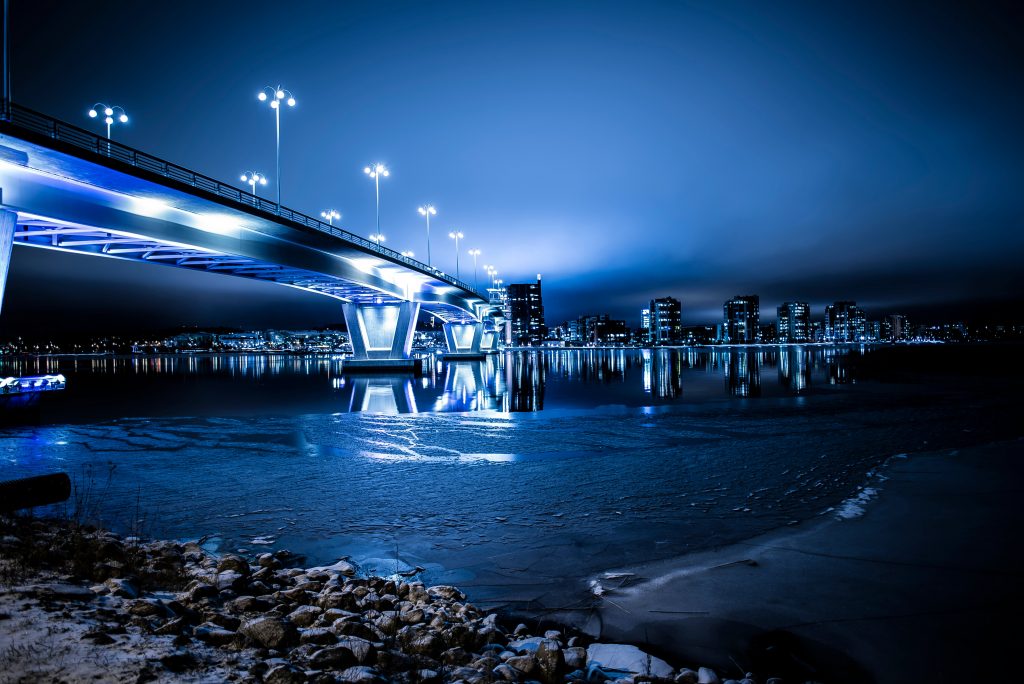
(2) Collect the layout of the comprehensive cross-section layout of the above and underground pipelines and lines provided by the planning department;
(3) Select the form of road lighting lamps, make color renderings, and collect relevant technical data of the lamps;
(4) Determine the types of light sources and electrical appliances;
(5) Determine the main power supply mode and location of the lighting power supply;
(6) Roughly calculate the capacity of road lighting devices;
(7) Roughly calculate the construction cost of the road lighting project.
A road lighting project that replaces the preliminary design with a plan. The design generally only compiles the plan description, without designing drawings. The design depth is mainly to determine the design plan and estimate the project investment accordingly.
- Construction drawing design steps and depth
When carrying out the construction design of the road lighting project, some of the issues involved have been determined in the preliminary design stage. The construction design should be further confirmed and refined. The specific steps are as follows:
(1) Select the road lighting level according to the road grade: including the average road surface brightness (illuminance), road surface brightness (illuminance) total uniformity and longitudinal uniformity, glare limit, environmental ratio, inducement and lighting power density and other indicators;
(2) The layout types of road lighting equipment: continuous lighting, special area (section) lighting, buffer lighting and elevated road lighting, etc.;
(3) Road lighting methods: single-sided cantilevered layout, double-sided staggered (or symmetrical) layout, centrally symmetric layout, multi-lamp combination, courtyard lighting and horizontal suspension cable layout, etc., and the lamp design plan is determined to produce a color effect Figure
(4) Select light source electrical appliances and lighting appliances, and then carry out preliminary lighting design, and preliminarily determine the height of the pole, the elevation angle, the length of the overhang, and the distance between the lights;
(5) Perform lighting calculations to check whether the lighting standards are met and whether the design is reasonable. Generally, the design and calculation must be repeated many times until the best solution is found;
(6) Determine the specific location of the power supply;
(7) Carry out calculations of line, load, voltage loss, power factor compensation and ground fault protection, etc., and determine the wire type, specification, power capacity, etc. according to the calculation;
(8) Draw the layout diagrams of road lighting circuits, lamps, power distribution control facilities, and cross-section diagrams of the arrangement of street light lines and various underground pipelines;
(9) Drawing road lighting power supply and distribution control system diagrams (primary and secondary circuit diagrams, load distribution diagrams);
(10) Draw design drawings of road lighting poles, lamp arms (frames), concrete foundations, cable trenches, hand (man) wells, distribution boxes (cabinets), and box-type substation foundations;
(11) Preparation of road lighting engineering design instructions, various design calculations, project estimates (budget), etc.
The drawings in the urban road lighting design documents should be drawn in accordance with the current national standard legends related to the unified drawing of architectural and mechanical drawings. The electrical design drawings, graphical symbols and text should be drawn in accordance with standards and specifications. To apply general drawings, the name and page number of the atlas should be indicated in the drawing catalog of the design file. When reusing drawings of other projects, the source of the drawings should also be explained in detail. The content of the design documents of each project can be determined according to the characteristics and actual conditions of the project, but it must meet the above-mentioned corresponding depth requirements.
3. Preparation of urban road lighting design documents
Urban road lighting design documents are generally composed of drawing catalogs, design instructions, design drawings, main equipment and material tables, and budgetary estimates.
(1) Catalog of design drawings
List the name, drawing type, drawing number, specification and quantity of this project drawing. The arrangement order of the drawings is to arrange the newly drawn drawings first, and then the selected standard drawings and the reused engineering design drawings.
(2) The main content of the design description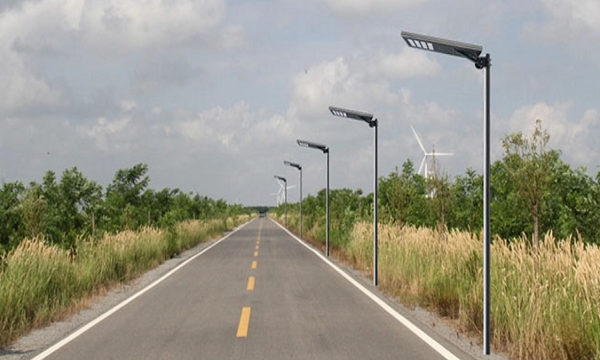
- Project overview: the starting and ending points of the road, the distribution of road sections, the location of street lights, the way of laying cables, and the total installation of various forms of street lights, total capacity, number of substation boxes, etc.
- Design basis: Explain the project approval documents and basis, standards, specifications, technical regulations of the local power supply department, and design materials provided by other majors of the project.
- Design scope: Explain the content and division of labor of the major based on the relevant materials of the project approved and issued by the superior competent authority. For expansion, reconstruction and new construction, the relationship and relationship between the original street lighting facilities and the newly reconstructed street lighting facilities should be explained. Design information provided.
- Power supply design: Explain the power supply and voltage, the location and distance of the power supply, dedicated or non-dedicated lines, cables or overhead lines, the reliability of power supply, the capacity of transformers, and the measures taken for power supply safety.
- Power distribution design: explain the total lighting load distribution and calculation results of the project, and give the capacity of each branch and loop facility, calculated current, and power factor before and after compensation. What kind of grounding protection system is used, the requirements for grounding resistance, the selection of wire types and specifications, and the laying methods of lines.
- Road lighting design: According to the characteristics and lighting requirements of roads and places, the layout of lighting fixtures should be selected, and the average road surface brightness (or road average illuminance), road surface brightness total uniformity and longitudinal uniformity of road speed lanes, sidewalks or squares should be determined Indices such as intensity (road surface illumination uniformity), glare limit, environmental ratio, power density and inducibility. The choice of light source and lighting equipment, such as pole material and height, elevation angle, single cantilever, double cantilever, combined lamps and installation precautions.
- Monitoring system design: Explain the type of signal device, the location and control method, the decentralized control or centralized control, the selection of control equipment and the use requirements that the monitoring system can meet.
- The design documents are mainly based on drawings, and the design description is a supplement to the design drawing. Anything that has been clearly expressed in the drawing can not be repeated in the design description.


